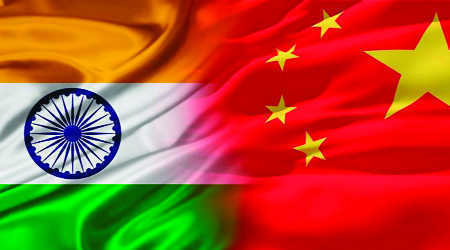NEW DELHI. Ahead of the second informal summit between Indian Prime Minister Narendra Modi and Chinese President Xi Jinping in the ancient coastal town of Mamallapuram scheduled on Friday, a New Delhi-based think tank has coined an “Out-of-Box” idea for addressing both the nation’s age-old border dispute.
Known as Mahabalipuram earlier, Mamallapuram is a town 58 km South of Chennai, the capitol city of South Indian state Tamilnadu.
The Imagindia Institute which is a new-age think tank and incubator of initiatives and public diplomacy across cultures has proposed that both the Asian giants jointly set up Gardens of Peace in the disputed areas on the India-China borders.
“We call upon India and China to establish enclaves of Gardens of Peace in some of the disputed areas on the India – China boundary as a visionary step towards peace and harmony between the two Asian giants”, said Robinder Nath Sachdev, President, The Imagindia Institute.
It was suggested that the first Garden of Peace can be established at a location in the Middle Sector.
With about four thousand kilometers long borders broadly categorized into the Eastern, Middle, and Western sectors, both the countries have witnessed border incidents and transgressions sometimes converting into skirmishes between the troops of both sides.
“Gardens of Peace are envisaged as enclaves that will be carved out of disputed territories and will range anywhere from 800 sq m to 8 sq km in size. The first Garden of Peace can be established at a location in the Middle Sector since here the terrains will be more suitable for a mutual agreement for the first prototype, as compared to locations in the Eastern or Western sectors,” added Sachdev.
While urging the Modi-Xi leadership to set this vision, The Imagindia Institute president hoped that the Spirit of Wuhan and the Spirit of Mamallapuram would find a true and ageless representation in the Gardens of Peace for generations and centuries to come.
“The enclaves will be ring-fenced by mutual agreement between the two nations. The half perimeter of the Gardens of Peace will be guarded by Chinese forces, and the other half of the perimeter will be secured by Indian forces. The governments, border agencies, and militaries of both nations can sit down and decide the location, size, maintenance, and modalities of the first Garden of Peace. Thereafter the protocols for boundary fencing, any beautification, ecology, and any touristic access can be jointly decided,” he added.
Apart from differing views on some of the larger territories, there are estimated to be about 50 or so other locations where the difference of opinions is a few kilometers on either side of the undefined boundary.
“Border incidents and transgressions are a major hurdle in India-China relations. Last year in a study done by ORF, it was reported that 30 border incidents took place between India and China during the period 2003-2014. And in addition, both countries reported hundreds of transgressions of the boundary by military patrols and locals every year,” said Sachdev.
The idea of establishing Gardens of Peace comes at a time when relations between India and China have strained after India changes the constitutional status of Jammu & Kashmir on August 5, and China opposed India’s move.
Sun Weidong, the Chinese envoy in New Delhi, however, is trying to create a positive situation before the visit of Xi Jinping and been making hopeful statements on social media platform Twitter as well as in interviews with Indian media.
On October 9, Sun Weidong tweeted, “With growing uncertainty in the international situation, China and India should strengthen cooperation on international and regional affairs, just as we once jointly advocated the Five Principles of Peaceful Coexistence, which have become basic norms of international relations.”
The Imageindia Institute’s president said border talks have been going on since long between the Special Representatives of both countries and shall yield their own results at their own pace.
“However, what we urgently need now is something else too – a breakthrough idea that promotes peace and can capture the wider imagination of people in both countries. “India and China are two great civilizations and neighbors. Unfortunately, the only conversation today is either about sour relations or about contentious trade. What is totally missing are any grand gestures of friendship that can build peace and inspire people-to-people relations between the two countries. The Gardens of Peace initiative seeks to fill exactly this gap,” said Sachdev.


